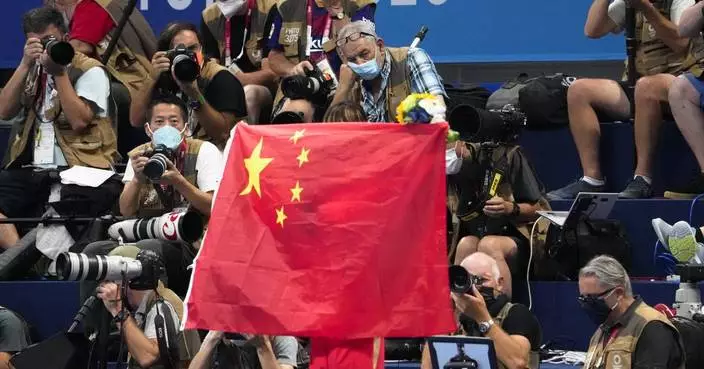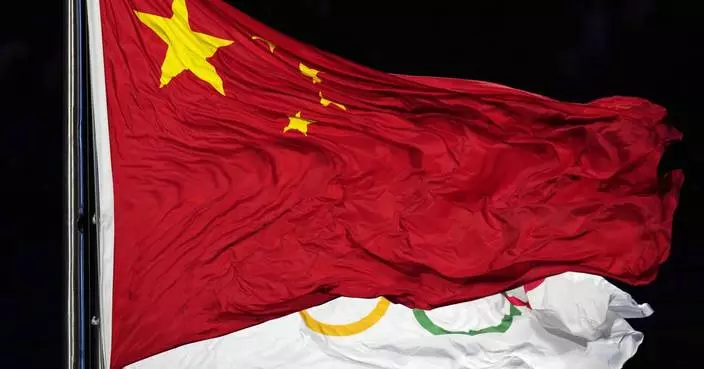China has made great strides in science and technology in the past five years and is now committed to innovation-driven economic growth.
Following are some highlights of China’s technical breakthroughs.
Click to Gallery
China has made great strides in science and technology in the past five years and is now committed to innovation-driven economic growth.
A view of the China's first molten-salt solar thermal power plant in Dunhuang City, Northwest China’s Gansu Province, Dec. 9, 2016. The molten-salt solar power plant, which was successfully connected to the grid on Dec. 26, 2016, is the third of its kind in the world and it generates electricity purely from solar power 24 hours a day. (Photo: China News Service/Yang Yanmin)
The C919, China's first homemade large passenger aircraft, rolled out of the final assembly line in Shanghai, Nov. 2, 2015. (Photo: China News Service/Zhang Hengwei)
A Long March-7 carrier rocket lifts off from the Wenchang Satellite Launch Center, South China's Hainan Province, June 25, 2016. (Photo: China News Service/Luo Yunfei)
A visitor takes pictures of a model of the Micius quantum satellite. China launched the world's first quantum satellite on a Long March-2D rocket from the Jiuquan Satellite Launch Center in Jiuquan, Gansu Province, Aug. 16, 2016. (Photo: China News Service/Han Suyuan)
Tu Youyou (R) who won the 2015 Nobel Prize in Physiology or Medicine delivers a lecture at the Karolinska Institutet, Stockholm, Sweden, Dec. 7, 2015. (Photo: China News Service/Shen Chen)
China successfully launched its fifth manned spacecraft, the Shenzhou 10, from the Jiuquan Satellite Launch Center in northwest China’s Gansu Province, June 11, 2013. Pictured are three astronauts aboard a simulated spacecraft. (Photo: China News Service/Qin Xianan)
China successfully launched its fifth manned spacecraft, the Shenzhou 10, from the Jiuquan Satellite Launch Center in northwest China’s Gansu Province, June 11, 2013.(Photo: China News Service/Zhang Lei)
Photo taken on Sept. 25, 2016 shows the 500-meter Aperture Spherical Telescope (FAST) in Pingtang County, southwest China's Guizhou Province. FAST, world's largest radio telescope, measures 500 meters in diameter. (Photo: China News Service/He Junyi)
By July 9, 2017, China had completed the trial exploration of flammable ice in the South China Sea, which extracted more than 300,000 cubic meters during 60 days of non-stop mining. China began research into flammable ice in 1998 and found deposits in the South China Sea in 2007. A number of breakthroughs were made during the trial exploration, ranging from extraction methods to environmental protection. (Photo: China News Service/Zhu Xia)
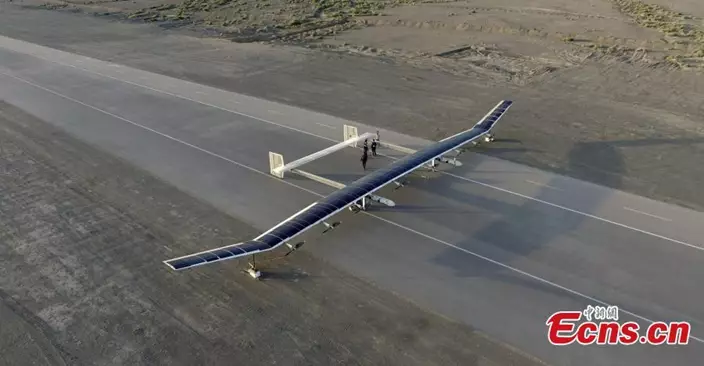
Photo taken on June 13, 2017 shows China's Caihong (CH), or Rainbow, solar-powered unmanned aerial vehicle (UAV) on its test flight. With a wingspan of 45 meters, the solar-powered drone by China Aerospace Science and Technology Corp is capable of flying at an altitude of 20 to 30 kilometers and has a cruising at a speed of 150 to 200 km per hour for long periods. (Photo: China News Service/Zhong Xin)
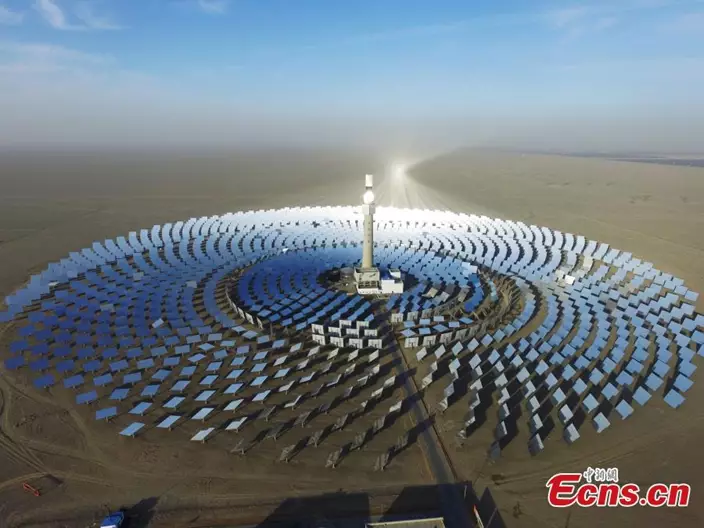
A view of the China's first molten-salt solar thermal power plant in Dunhuang City, Northwest China’s Gansu Province, Dec. 9, 2016. The molten-salt solar power plant, which was successfully connected to the grid on Dec. 26, 2016, is the third of its kind in the world and it generates electricity purely from solar power 24 hours a day. (Photo: China News Service/Yang Yanmin)
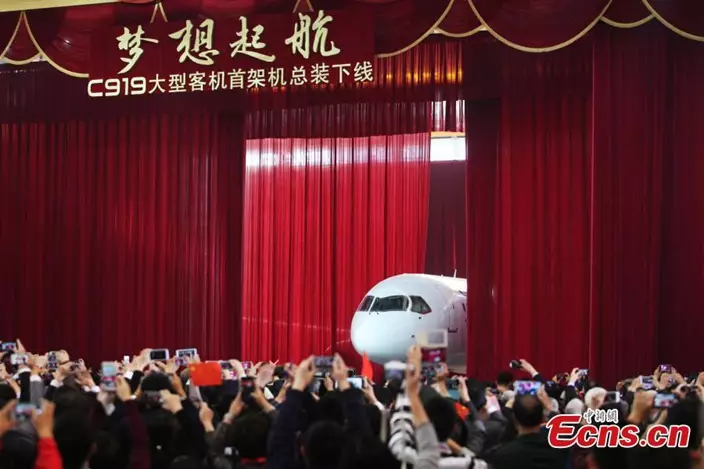
The C919, China's first homemade large passenger aircraft, rolled out of the final assembly line in Shanghai, Nov. 2, 2015. (Photo: China News Service/Zhang Hengwei)
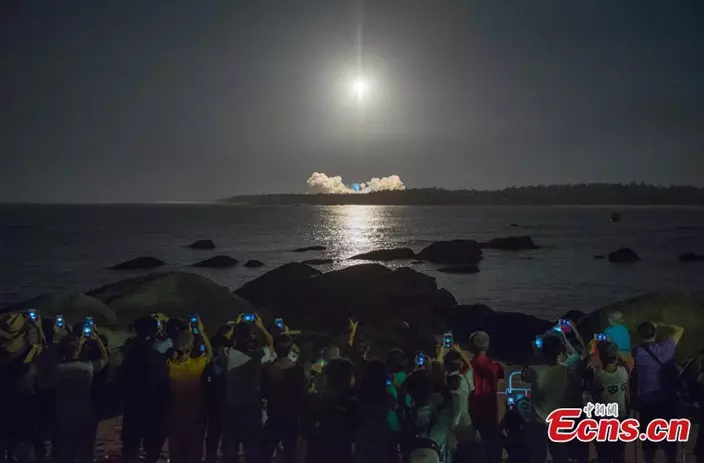
A Long March-7 carrier rocket lifts off from the Wenchang Satellite Launch Center, South China's Hainan Province, June 25, 2016. (Photo: China News Service/Luo Yunfei)
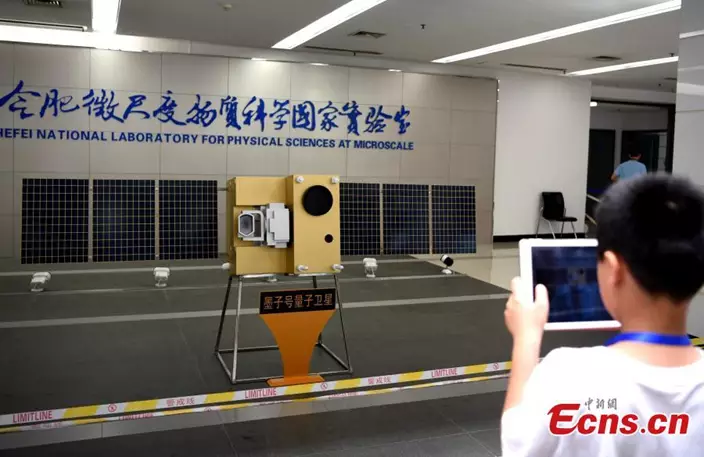
A visitor takes pictures of a model of the Micius quantum satellite. China launched the world's first quantum satellite on a Long March-2D rocket from the Jiuquan Satellite Launch Center in Jiuquan, Gansu Province, Aug. 16, 2016. (Photo: China News Service/Han Suyuan)
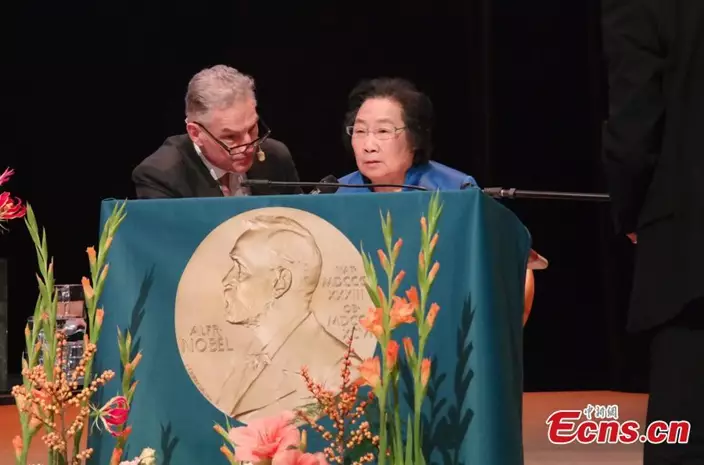
Tu Youyou (R) who won the 2015 Nobel Prize in Physiology or Medicine delivers a lecture at the Karolinska Institutet, Stockholm, Sweden, Dec. 7, 2015. (Photo: China News Service/Shen Chen)
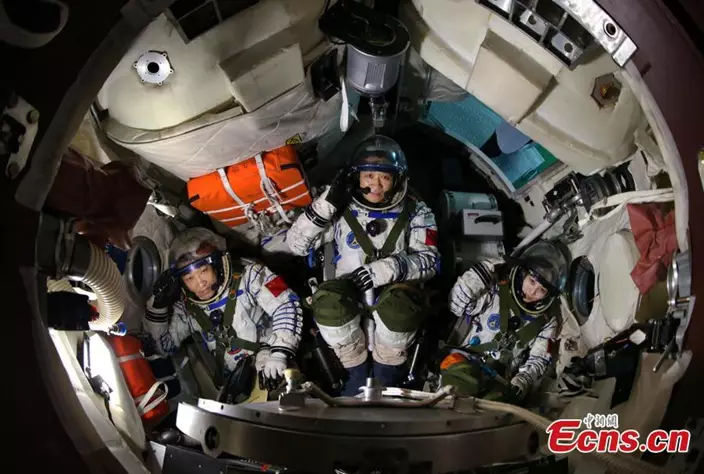
China successfully launched its fifth manned spacecraft, the Shenzhou 10, from the Jiuquan Satellite Launch Center in northwest China’s Gansu Province, June 11, 2013. Pictured are three astronauts aboard a simulated spacecraft. (Photo: China News Service/Qin Xianan)
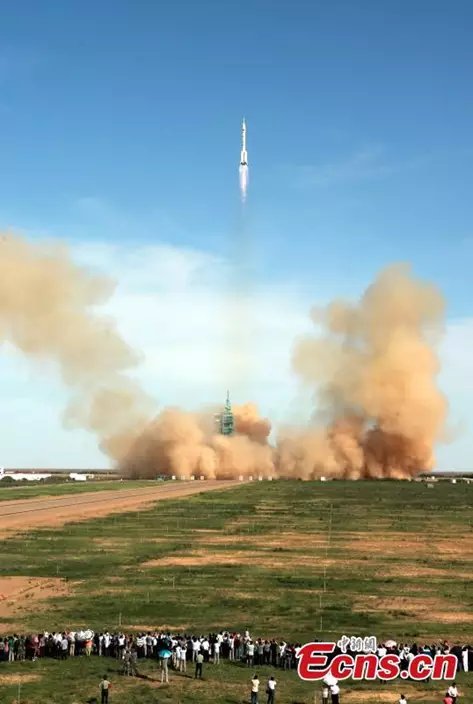
China successfully launched its fifth manned spacecraft, the Shenzhou 10, from the Jiuquan Satellite Launch Center in northwest China’s Gansu Province, June 11, 2013.(Photo: China News Service/Zhang Lei)
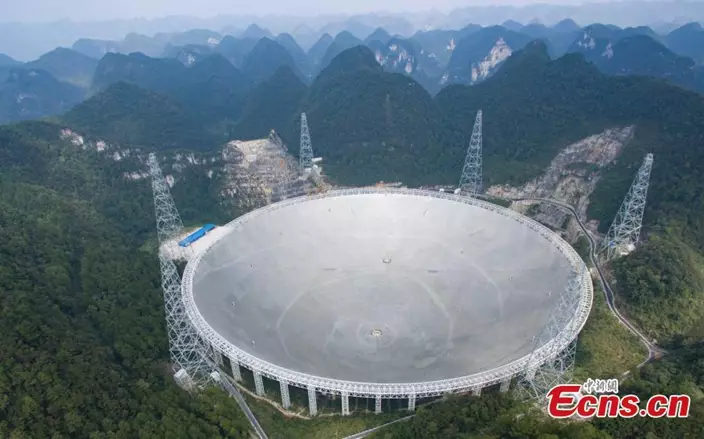
Photo taken on Sept. 25, 2016 shows the 500-meter Aperture Spherical Telescope (FAST) in Pingtang County, southwest China's Guizhou Province. FAST, world's largest radio telescope, measures 500 meters in diameter. (Photo: China News Service/He Junyi)

By July 9, 2017, China had completed the trial exploration of flammable ice in the South China Sea, which extracted more than 300,000 cubic meters during 60 days of non-stop mining. China began research into flammable ice in 1998 and found deposits in the South China Sea in 2007. A number of breakthroughs were made during the trial exploration, ranging from extraction methods to environmental protection. (Photo: China News Service/Zhu Xia)
SHANGHAI (AP) — U.S. Secretary of State Antony Blinken opened his first full day of meetings in China on Thursday by talking with local government officials in Shanghai.
Blinken discussed local and regional issues with Chen Jining, the Chinese Communist Party Secretary of Shanghai. He also planned to speak to students and business leaders before flying to Beijing for what are expected to be contentious talks with national officials, including Foreign Minister Wang Yi.
Blinken arrived in Shanghai on Wednesday shortly before President Joe Biden signed a $95 billion foreign aid package that has several elements likely to anger the Chinese, including $8 billion to counter China’s growing aggressiveness toward Taiwan and in the South China Sea. It also seeks to force TikTok’s China-based parent company to sell the social media platform.
China has railed against U.S. assistance to Taiwan, the self-governing island that it regards as a renegade province, and immediately condemned the move as a dangerous provocation. It also strongly opposes efforts to force TikTok’s sale.
Still, the fact that Blinken made the trip — shortly after a conversation between Biden and Chinese President Xi Jinping, a similar visit to China by Treasury Secretary Janet Yellen and a call between the U.S. and Chinese defense chiefs — is a sign the two sides are at least willing to discuss their differences.
“I think it’s important to underscore the value — in fact, the necessity — of direct engagement, of speaking to each other, laying out our differences, which are real, seeking to work through them,” Blinken told Chen.
“We have an obligation for our people, indeed an obligation to the world, to manage the relationship between our two countries responsibly,” he said. “That is the obligation we have, and one that we take very seriously.”
Chen agreed with that sentiment and said the recent Biden-Xi call had helped the “stable and healthy development of our two countries’ relationship.”
“Whether we choose cooperation or confrontation affects the well-being of both peoples, both countries, and the future of humanity” he said.
Chen added that he hoped Blinken was able to get a “deep impression and understanding” of Shanghai.
Shortly after arriving, Blinken attended a Chinese basketball playoff game between the local Shanghai Sharks and the Zhejiang Golden Bulls, with the home team losing in the last seconds in 121-120 nailbiter.

U.S. Secretary of State Antony Blinken talks with U.S. Ambassador to China Nicholas Burns, center, with U.S. Consulate General in Shanghai Scott Walker, left, while attending a basketball game between the Shanghai Sharks and the Zhejiang Golden Bulls at the Shanghai Indoor Stadium, Wednesday, April 24, 2024, in Shanghai, China. (AP Photo/Mark Schiefelbein, Pool)

U.S. Secretary of State Antony Blinken talks with U.S. Ambassador to China Nicholas Burns, center, with U.S. Consulate General in Shanghai Scott Walker, right, while attending a basketball game between the Shanghai Sharks and the Zhejiang Golden Bulls at the Shanghai Indoor Stadium, Wednesday, April 24, 2024, in Shanghai, China. (AP Photo/Mark Schiefelbein, Pool)

U.S. Secretary of State Antony Blinken, second left, and U.S. Ambassador to China Nicholas Burns, far right, arrive at the Grand Halls to meet with Shanghai Party Secretary Chen Jining on Thursday, April 25, 2024, in Shanghai, China. (AP Photo/Mark Schiefelbein, Pool)

U.S. Secretary of State Antony Blinken, left, shakes hans with Shanghai Party Secretary Chen Jining as they meet at the Grand Halls, Thursday, April 25, 2024, in Shanghai, China. (AP Photo/Mark Schiefelbein, Pool)
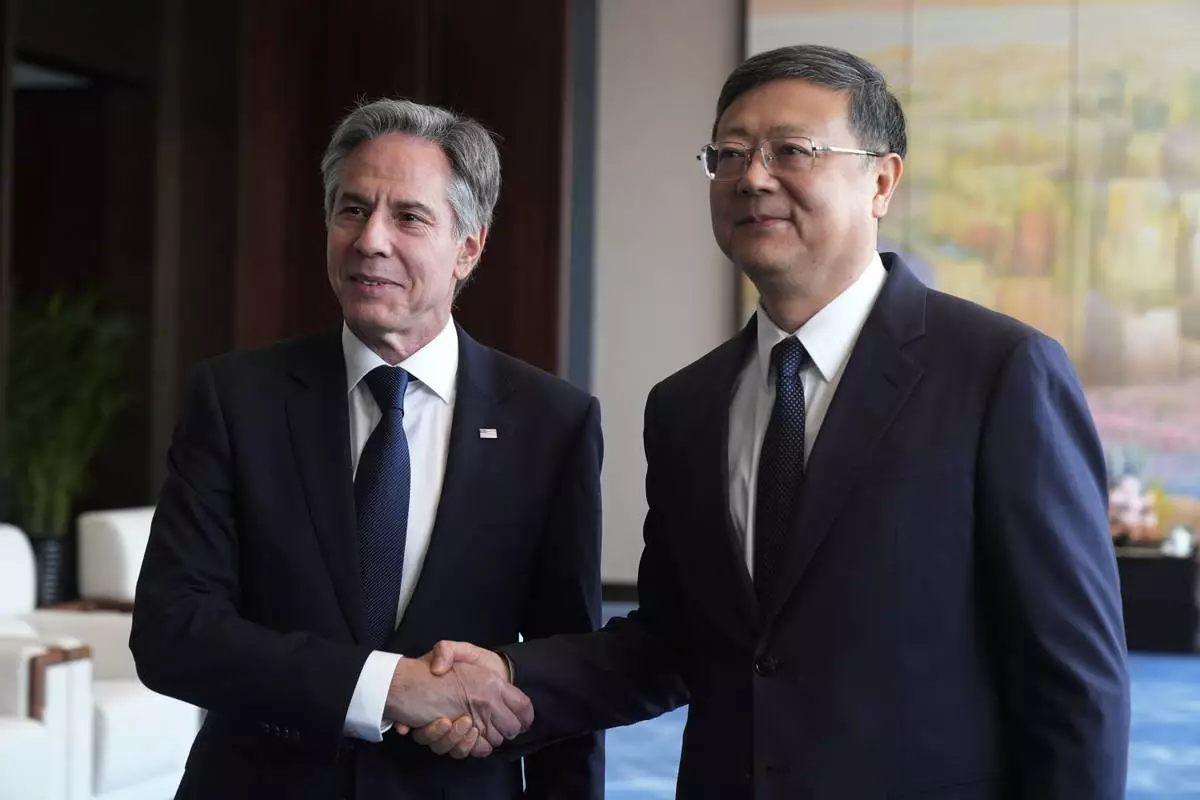
U.S. Secretary of State Antony Blinken, left, meets with Shanghai Party Secretary Chen Jining at the Grand Halls, Thursday, April 25, 2024, in Shanghai, China. (AP Photo/Mark Schiefelbein, Pool)
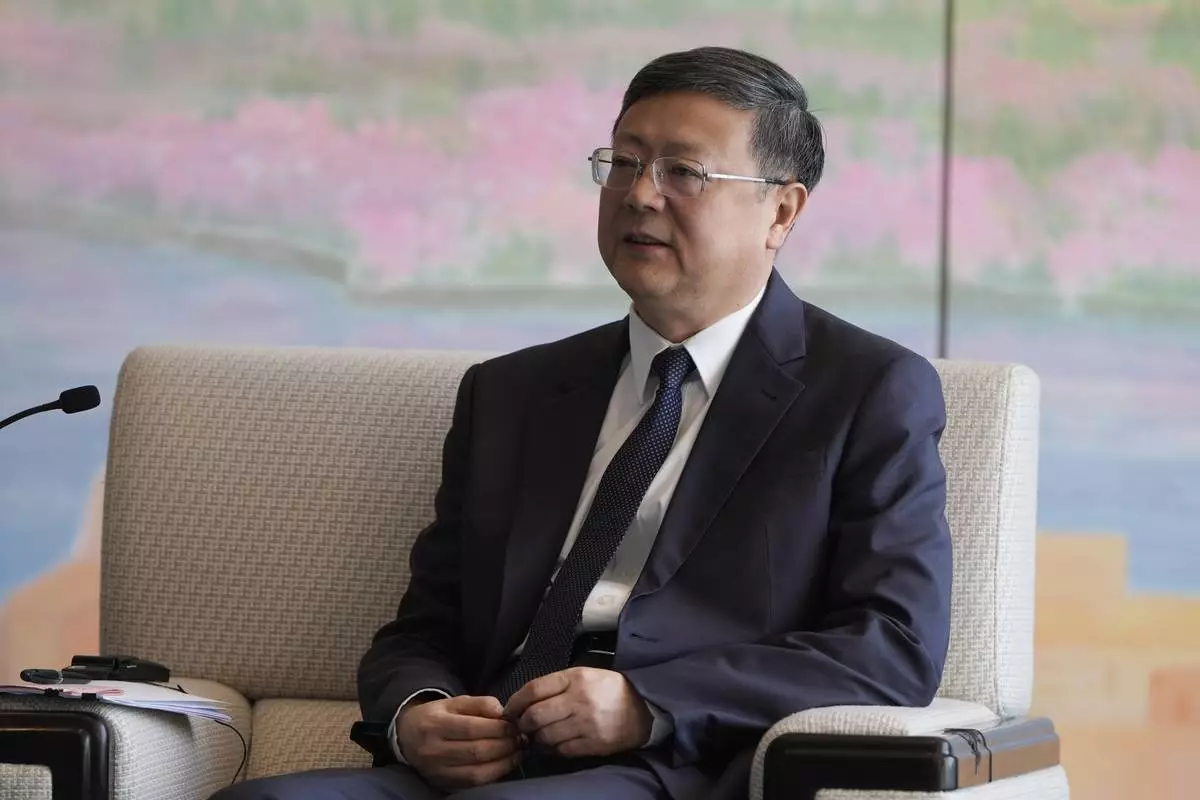
Shanghai Party Secretary Chen Jining talks with U.S. Secretary of State Antony Blinken at the Grand Halls, Thursday, April 25, 2024, in Shanghai, China. (AP Photo/Mark Schiefelbein, Pool)

U.S. Secretary of State Antony Blinken talks with Shanghai Party Secretary Chen Jining at the Grand Halls, Thursday, April 25, 2024, in Shanghai, China. (AP Photo/Mark Schiefelbein, Pool)
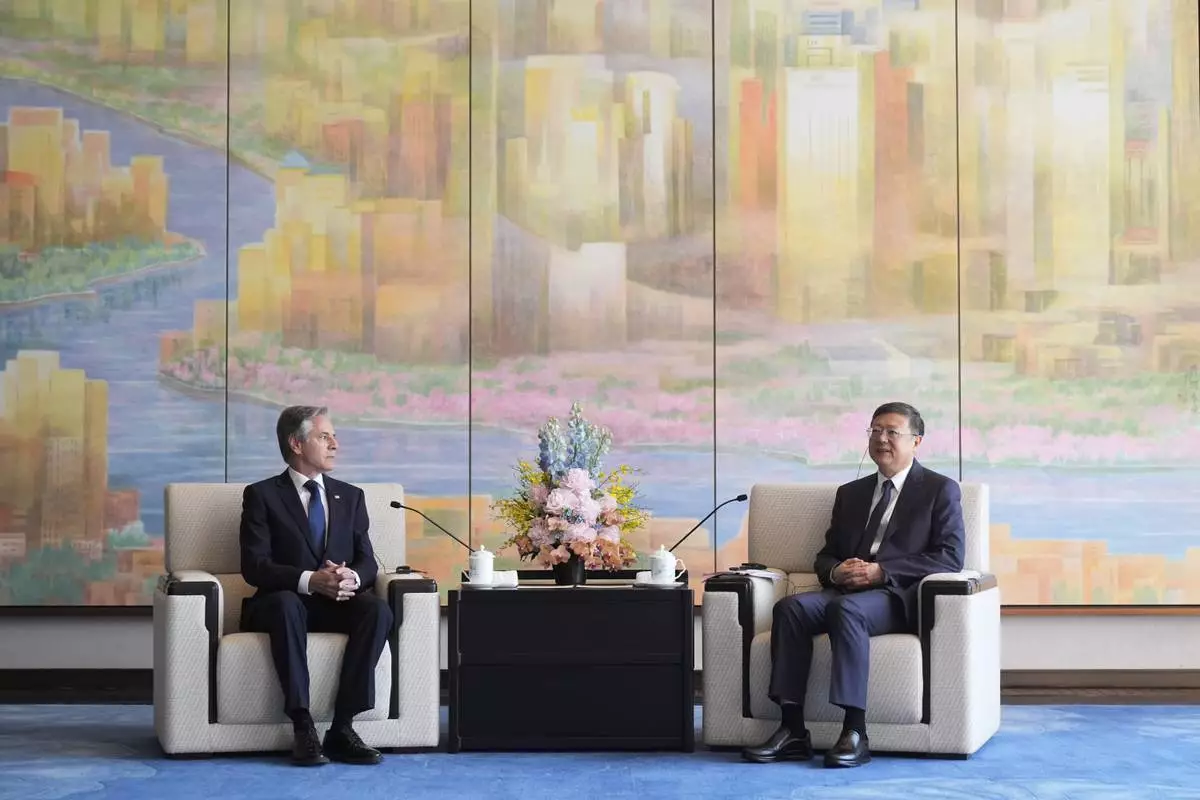
U.S. Secretary of State Antony Blinken, left, talks with Shanghai Party Secretary Chen Jining at the Grand Halls, Thursday, April 25, 2024, in Shanghai, China. (AP Photo/Mark Schiefelbein, Pool)
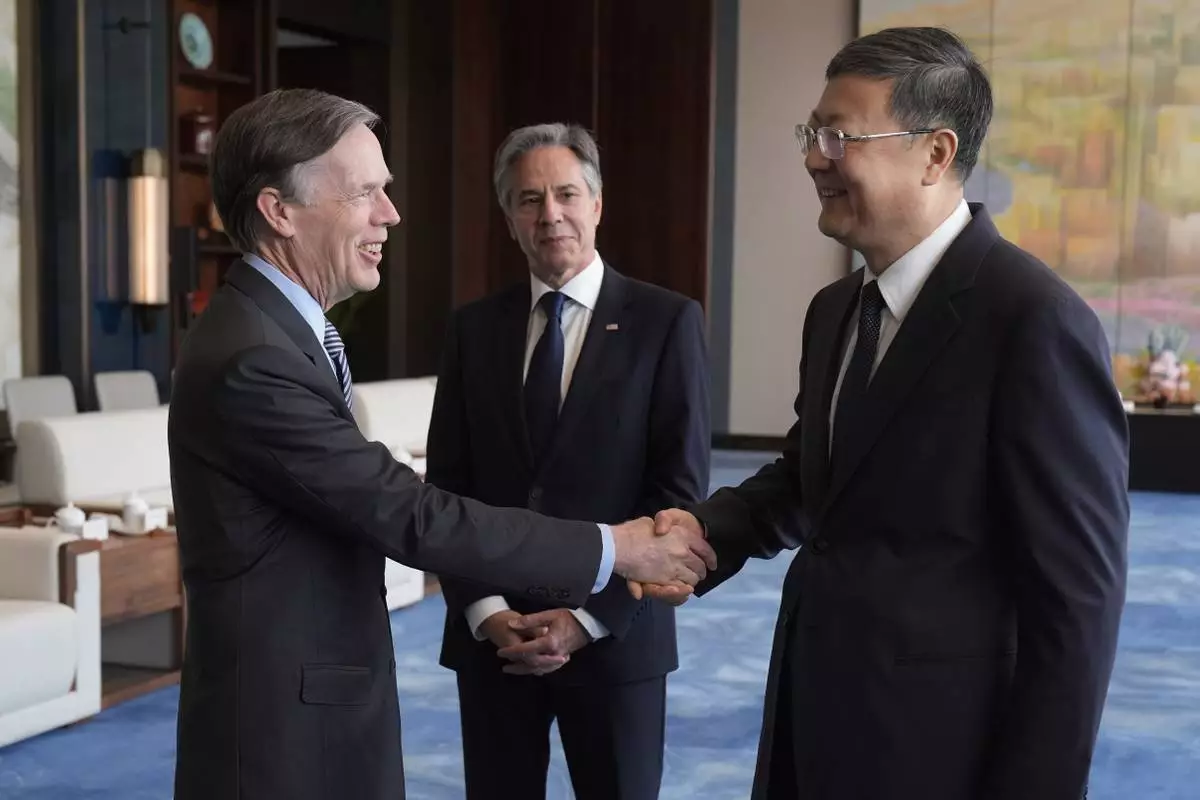
U.S. Secretary of State Antony Blinken, center, watches U.S. Ambassador to China Nicholas Burns, left, shake hands with Shanghai Party Secretary Chen Jining at the Grand Halls, Thursday, April 25, 2024, in Shanghai, China. (AP Photo/Mark Schiefelbein, Pool)


























